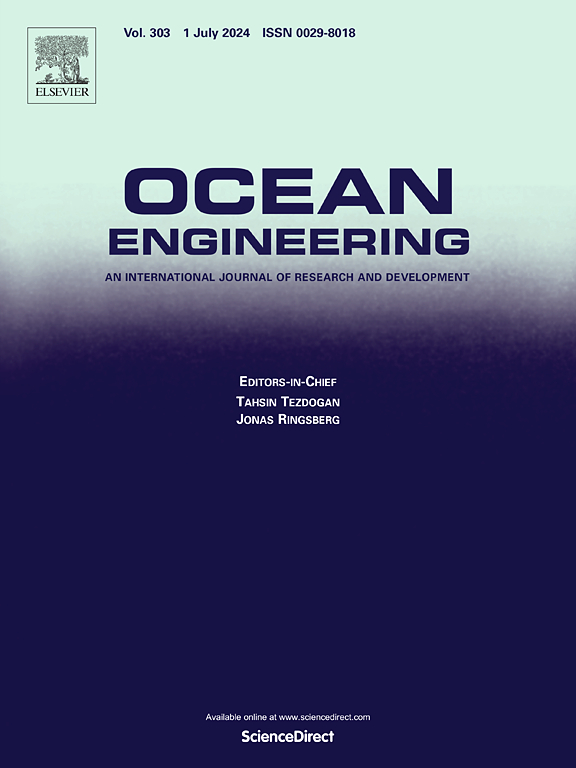Numerical simulation and analytical study of ship-bridge collision based on fluid-structure interaction
IF 4.6
2区 工程技术
Q1 ENGINEERING, CIVIL
引用次数: 0
Abstract
Many ship-bridge collision studies underestimate the role of fluid dynamics, often relying on simplified models that assume a constant additional mass (CAM) for the ship. This approach neglects important factors such as ship profile and tonnage, leading to inaccuracies in collision predictions. To address this, a finite element model is developed using LS-DYNA, incorporating fluid dynamics in the ship-water-bridge interaction. This study examines the impact of fluid dynamics and key ship parameters—such as impact speed, draft depth, collision angle, and tonnage—on impact force, energy conversion, structural response, and ship damage. Comparisons between CAM and fluid-structure interaction (FSI) models show significant differences. For instance, higher impact velocity and draft depth increase ship damage, while the FSI model demonstrates that the fluid reduces structural damage through a “water cushion” effect. In collisions with large-tonnage, deep-draft ships, the CAM model underestimates peak collision force. These findings emphasize the importance of considering fluid effects in ship-bridge collision analyses and offer more accurate methods for future assessments.
基于流固耦合的船桥碰撞数值模拟与分析研究
许多船桥碰撞研究低估了流体动力学的作用,往往依赖于假设船舶恒定附加质量(CAM)的简化模型。这种方法忽略了船舶轮廓和吨位等重要因素,导致碰撞预测不准确。为了解决这个问题,使用LS-DYNA开发了一个有限元模型,将流体动力学纳入船-水-桥相互作用中。本研究考察了流体动力学和关键船舶参数(如冲击速度、吃水深度、碰撞角度和吨位)对冲击力、能量转换、结构响应和船舶损伤的影响。CAM模型与流固耦合(FSI)模型之间的比较显示出显著差异。例如,更高的冲击速度和吃水深度会增加船舶损伤,而FSI模型表明,流体通过“水垫”效应降低了结构损伤。在与大吨位、深吃水船舶的碰撞中,CAM模型低估了峰值碰撞力。这些发现强调了在船桥碰撞分析中考虑流体效应的重要性,并为未来的评估提供了更准确的方法。
本文章由计算机程序翻译,如有差异,请以英文原文为准。
求助全文
约1分钟内获得全文
求助全文
来源期刊

Ocean Engineering
工程技术-工程:大洋
CiteScore
7.30
自引率
34.00%
发文量
2379
审稿时长
8.1 months
期刊介绍:
Ocean Engineering provides a medium for the publication of original research and development work in the field of ocean engineering. Ocean Engineering seeks papers in the following topics.
 求助内容:
求助内容: 应助结果提醒方式:
应助结果提醒方式:


